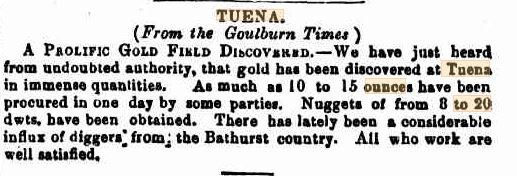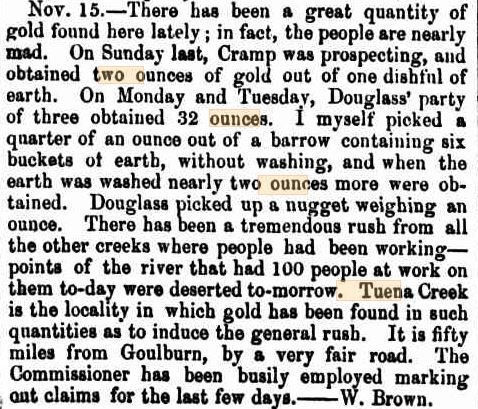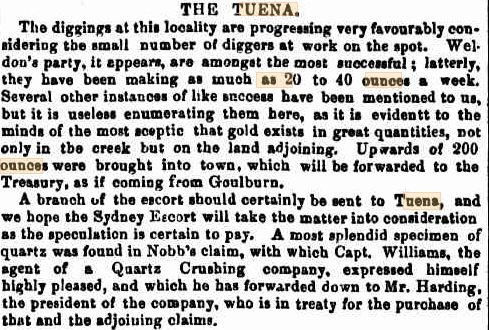I read that article last night.
I'm on my way right now.
I'm on my way right now.

Gunter1 said:Yeah I average out at about half to one and half grams a day panning . 25 days for an ounce .
Its the thrill of the case and not knowing what the next pan or crevise will hold. Its nice to be able to cover fuel costs for the day at least.Gunter1 said:Yeah jethro. Depends where you are I guess ! Still fun isnt it ?
silver said:In my dream I sit upon a throne of gold.
:goldnugget: :goldnugget: :goldnugget: :goldnugget: :goldnugget: :goldnugget: :goldnugget:

And how many actually do so by selling their gold?jethro said:Its the thrill of the case and not knowing what the next pan or crevise will hold. Its nice to be able to cover fuel costs for the day at least.Gunter1 said:Yeah jethro. Depends where you are I guess ! Still fun isnt it ?:goldnugget:
Spirit said:Thanks everyone, yeah the article didn't say an oz a day directly but it definitely hinted to ounces per outing which isn't the case, imagine having no experience and reading that. It was more for newcomers than myself. Get ready for another influx of cheap detectors lol
goldtrapper said:Well...at Sofala NSW back in the Mid 1800's you would have easily panned an ounce per day just in the town.
In the early days of the rushes they HAD to get that (on average) because of inflated goldfield prices - that would have been what , $19 per ounce at a time when each child was costing ten cents per day to go to school, and a Miner's Licence cost $7.50 per week. 50,000 people averaging 1 oz per week is 50,000 ounces per week is 2,500,000 oz per year, which given the huge amount produced in the first couple of years (when everything was alluvial) sounds about right. They tended to be many of the same miners migrating from field to field as the easy gold was exhausted. There were less than 100,000 people in the whole of Victoria in the first year of the Victorian rushes (people, not gold diggers), peaking over the next 3-4 years closer to 250,000. In 1856 three million ounces were mined (so one ounce per month average for every person in Victoria). Many people on the goldfields were supplying the miners, not mining themselves. It probably fell off rapidly after 1855-8. Many must have been feeling it by 1854, hence the Eureka rebellion against licence fees.davsgold said:Like now really, you could live reasonably well on an ounce per week, but like back then not everyone was getting an ounce per week :goldpan:ickshovel:
davsgold said:Spirit said:Thanks everyone, yeah the article didn't say an oz a day directly but it definitely hinted to ounces per outing which isn't the case, imagine having no experience and reading that. It was more for newcomers than myself. Get ready for another influx of cheap detectors lol
Those stories and TV shows sell dreams and prospecting gear (metal detectors) in particular, do you know of any tradie that learnt his trade in a day, it usually takes years and someone that know what they are actually doing to get them up to where they need to be to make a living, prospecting is no different.
cheers dave
goldierocks said:In the early days of the rushes they HAD to get that (on average) because of inflated goldfield prices - that would have been what , $19 per ounce at a time when each child was costing ten cents per day to go to school, and a Miner's Licence cost $7.50 per week. 50,000 people averaging 1 oz per week is 50,000 ounces per week is 2,500,000 oz per year, which given the huge amount produced in the first couple of years (when everything was alluvial) sounds about right. They tended to be many of the same miners migrating from field to field as the easy gold was exhausted. There were less than 100,000 people in the whole of Victoria in the first year of the Victorian rushes (people, not gold diggers), peaking over the next 3-4 years closer to 250,000. In 1856 three million ounces were mined (so one ounce per month average for every person in Victoria). Many people on the goldfields were supplying the miners, not mining themselves. It probably fell off rapidly after 1855-8. Many must have been feeling it by 1854, hence the Eureka rebellion against licence fees.davsgold said:Like now really, you could live reasonably well on an ounce per week, but like back then not everyone was getting an ounce per week :goldpan:ickshovel:
So pretty good at the start.



DrDuck said:We can only dream about the returns in the early days of the mainly alluvial fields. Methods would have been mainly dish and cradle back then. Imagine 2 ounces in a pan!
Tuena 1851:
https://www.prospectingaustralia.com/forum/img/member-images/158/1610061027_tuena_2_sept_1852.jpg
Tuena 1852:
https://www.prospectingaustralia.com/forum/img/member-images/158/1610060954_tuena_nov_1851.jpg
Tuena 1853:
https://www.prospectingaustralia.com/forum/img/member-images/158/1610060988_tuena1_25_sept_1852.jpg
What is - you don't even say what you are disagreeing with, much less give any contrary evidence to support your case.GreenRiver said:Utter Codswallop!
Enter your email address to join: